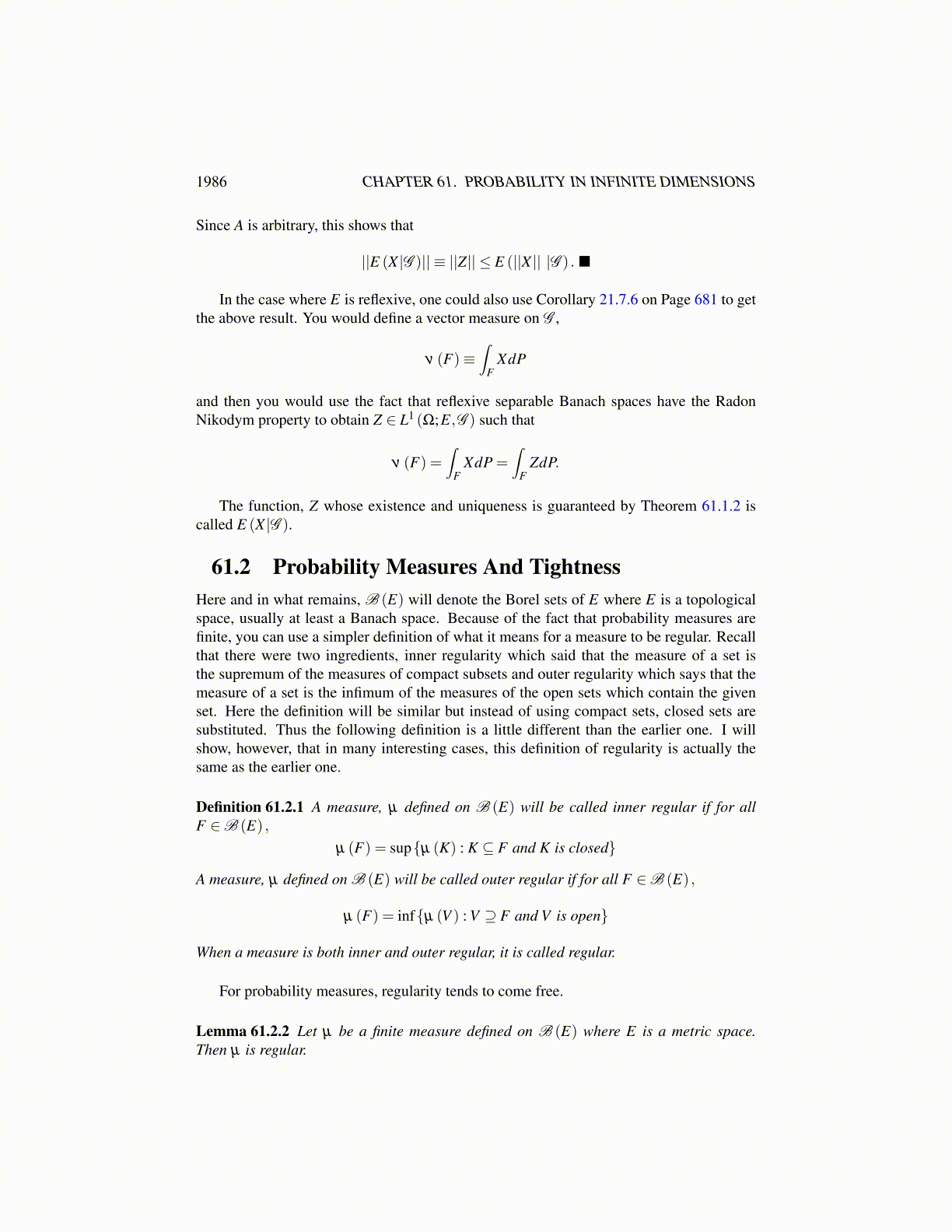
1986 CHAPTER 61. PROBABILITY IN INFINITE DIMENSIONS
for all A ∈ G . The letting A≡ Z−1(
B(
an,||an||
4
))it follows
0 =∫
AZ−an +andP
and so
||an||P(A) =∣∣∣∣∣∣∣∣∫A
andP∣∣∣∣∣∣∣∣= ∣∣∣∣∣∣∣∣∫A
(an−Z)dP∣∣∣∣∣∣∣∣
≤∫
Z−1(
B(
an,||an ||
4
)) ||an−Z||dP≤ ||an||4
P(A)
which is a contradiction unless P(A) = 0. Therefore, letting
N ≡ ∪∞n=1Z−1
(B(
an,||an||
4
))= Z−1 (E \{0})
it follows N has measure zero and so Z = 0 a.e. This proves uniqueness because if Z,Z′
both hold, then from the above argument, Z−Z′ = 0 a.e.Next I will show Z exists. To do this recall Theorem 21.2.4 on Page 652 which is stated
below for convenience.
Theorem 61.1.2 An E valued function, X, is Bochner integrable if and only if X is stronglymeasurable and ∫
Ω
||X (ω)||dP < ∞. (61.1.1)
In this case there exists a sequence of simple functions {Xn} satisfying∫Ω
||Xn (ω)−Xm (ω)||dP→ 0 as m,n→ ∞. (61.1.2)
Xn (ω) converging pointwise to X (ω),
||Xn (ω)|| ≤ 2 ||X (ω)|| (61.1.3)
andlimn→∞
∫Ω
||X (ω)−Xn (ω)||dP = 0. (61.1.4)
Now let {Xn} be the simple functions just defined and let
Xn (ω) =m
∑k=1
xkXFk (ω)
where Fk ∈F , the Fk being disjoint. Then define
Zn ≡m
∑k=1
xkE(XFk |G
).